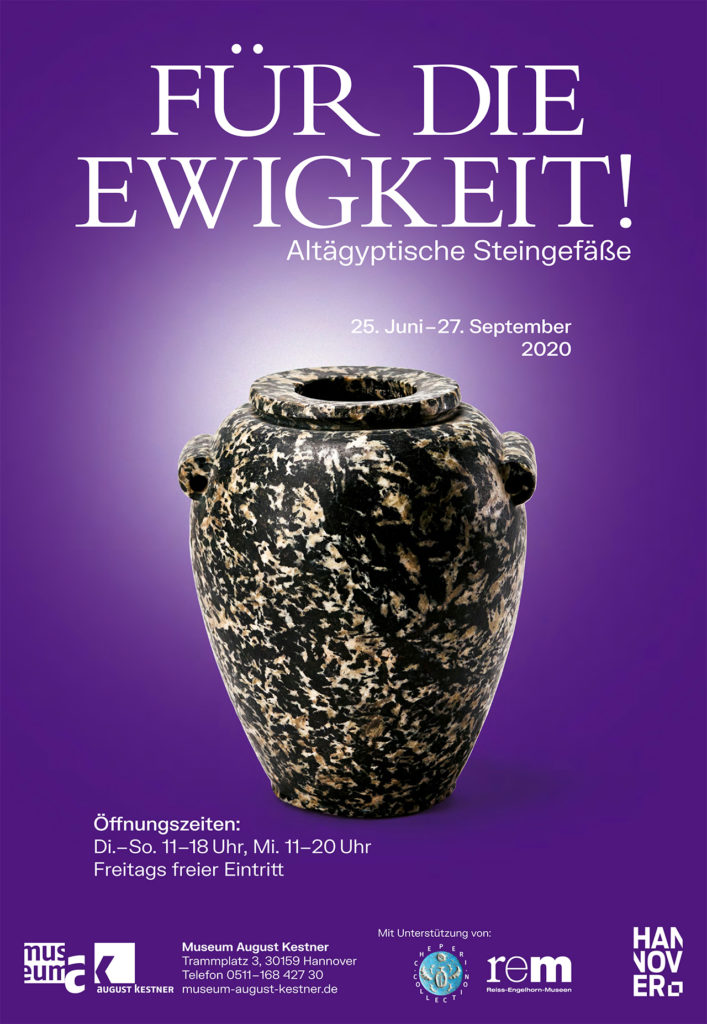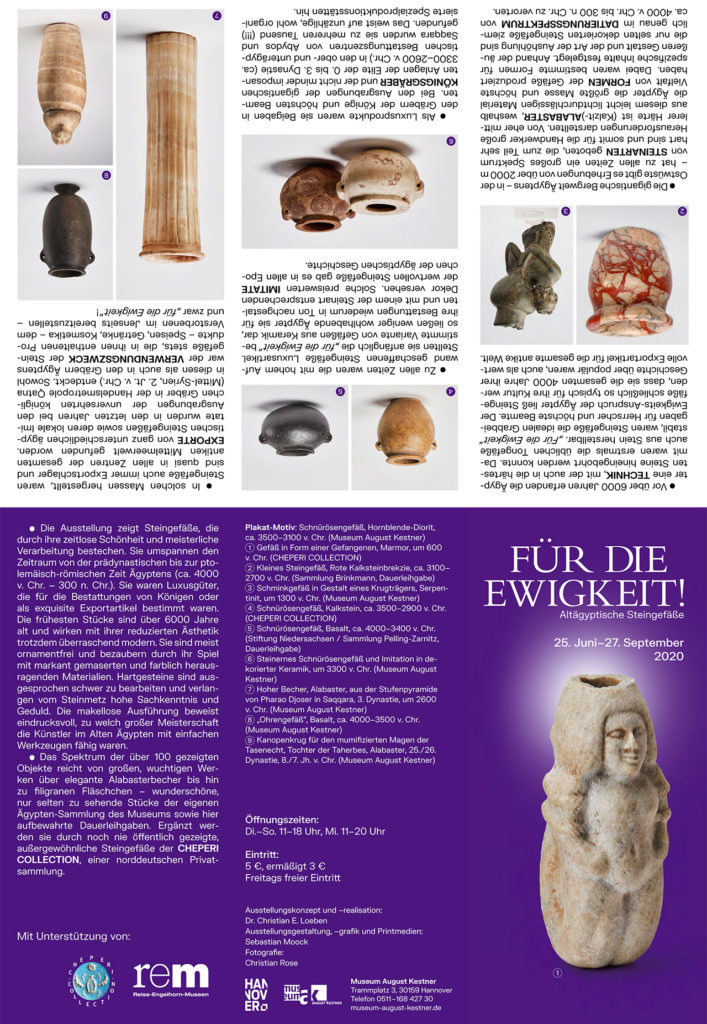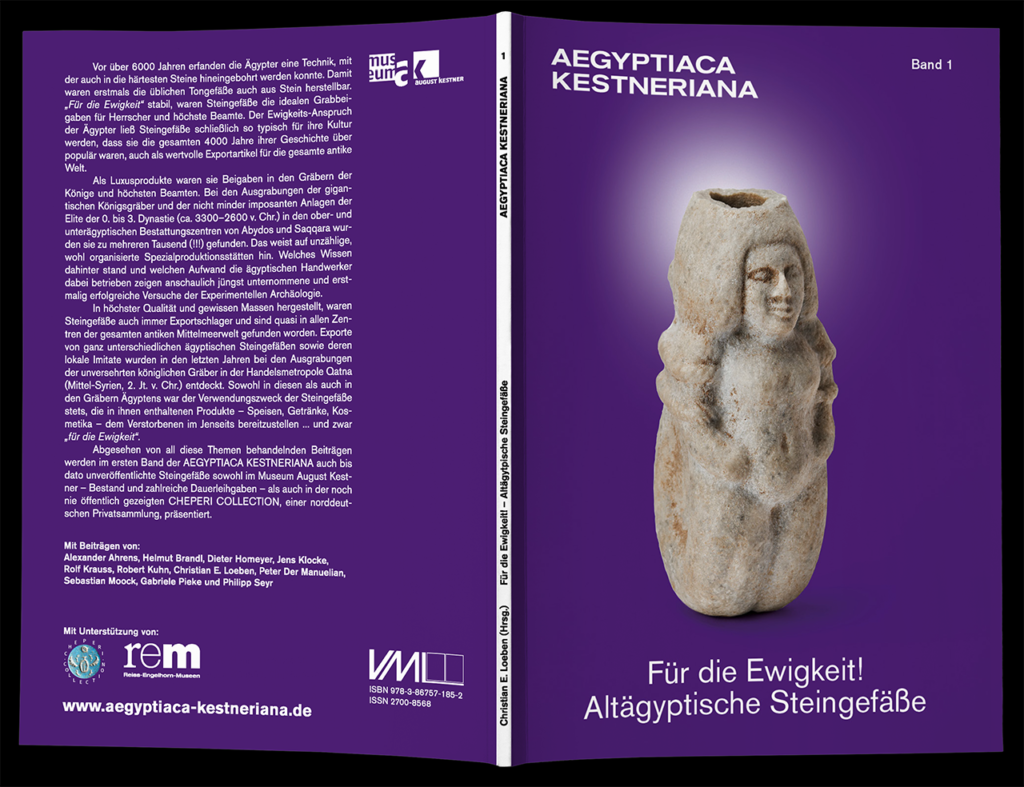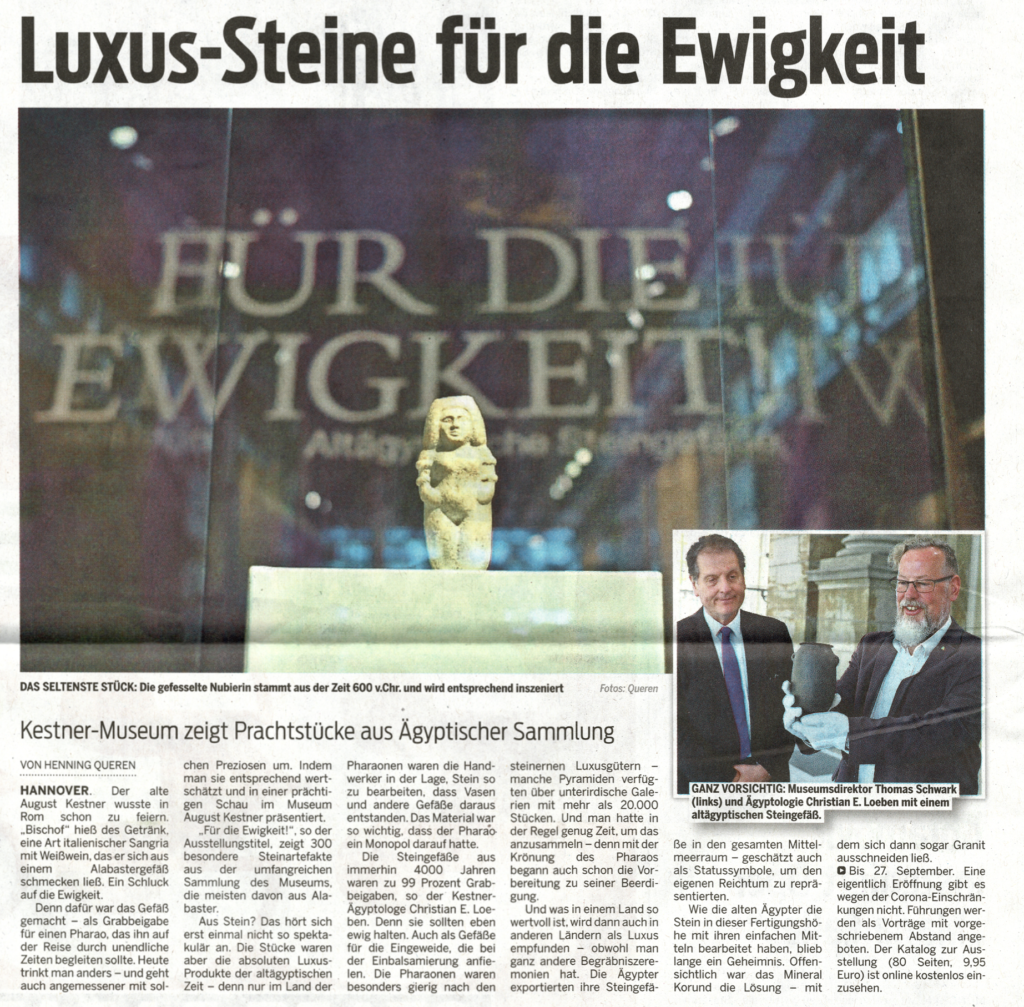More than 6000 years ago, the Egyptians invented a technique with which even the hardest stones could be drilled into. For the first time, the usual clay vessels could be made of stone. Sturdy “for eternity”, stone vessels were the ideal burial objects for rulers and highest officials. The Egyptians’ claim to eternity finally made stone vessels so typical of their culture that they were popular throughout the entire 4000 years of their history, also as valuable export articles for the entire ancient world.
As luxury products they were burial objects in the graves of kings and highest officials. Between 3300 -2600 BC many impressive compounds in the burial centres of Abydos and Saqqara (Egypt) we’re build. During the excavations of these and the gigantic royal tombs several thousand were found. This points to countless, well-organized special production sites. What knowledge was behind it and what effort the Egyptian craftsmen put into it is clearly shown by recent and for the first time successful experiments in experimental archaeology.
Produced in the highest quality and in certain masses, stone vessels have always been export hits and have been found in virtually all centres of the entire ancient Mediterranean world. Exports of very different Egyptian stone vessels as well as their local imitations were discovered in recent years during the excavations of the intact royal tombs in the trading metropolis of Qatna (Central Syria, 2nd millennium BC). In these as well as in the tombs of Egypt, the purpose of the stone vessels was always to provide the products they contained – food, drinks, cosmetics – to the deceased in the hereafter … “for eternity”.
In addition to all these topics, the first volume of the AEGYPTIACA KESTNERIANA presents previously unpublished stone vessels in the Museum August Kestner – stock and numerous permanent loans – as well as in the CHEPERI COLLECTION, a private collection from northern Germany, which has never been shown to the public.








